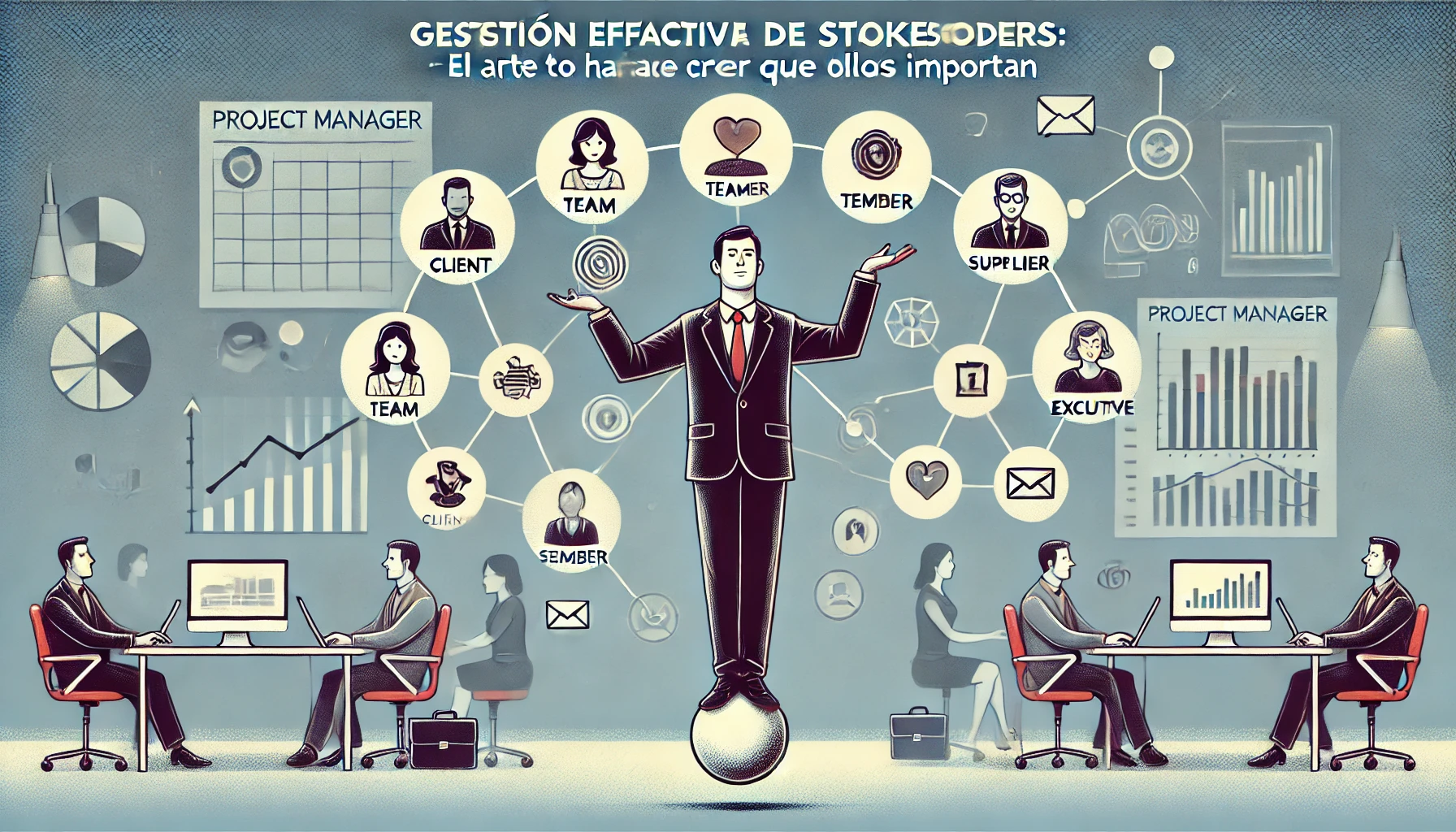
When we talk about Agile transformation, we usually imagine colorful post-its, digital boards and retrospectives with creative dynamics. But what about leadership? Where is the role of the leader in all this?
Spoiler: if leadership doesn’t change, Agile transformation is just Agile makeup.
This is a straightforward (and smoke-free) guide to understanding the true role of the Agile leader in a real transformation. Not the one that comes out in the manuals. The one that hurts, discomforts and transforms.
Leadership in times of change: from bosses to facilitators of purpose
Breaking myths: Leading in Agile is not about “pulling leaders aside”. On the contrary. Organizational leadership in change processes is the most critical piece for transformation to have meaning, direction and sustainability.
Good leadership today is not measured by controlling more, but by connecting better. In an Agile transformation, the leader ceases to be a boss and becomes a facilitator of purpose and evolution.
An Agile leader translates the organizational purpose into a clear north for the teams. It is a compass rather than a rudder.
Transforming for what? If there is no shared “what for”, teams move forward aimlessly. As Alice’s Hatter said (adapted): “If you don’t know where you’re going, any road will do”.
In our experience in organizational consulting, this is a key breaking point in many transformations: without shared meaning, everything is diluted.

Real example, seen with “my eyes”: In an organization that claimed to want to become more “agile”, the CEO (or CIO or CTO) never clearly explained what they wanted to achieve. Result: confused teams prioritized contradictory tasks, and middle leaders went into “every man for himself” mode.
Another example seen in the real world: A company that wants to be Agile: from one day to the next, all the teams are Scrum teams.
The result you can imagine, but in case you can’t: a total failure, people don’t understand what to do, they only see more meetings and new names.
A good Agile leader translates the organizational purpose into a clear north for the teams. It is a compass rather than a rudder.
Sometimes, the right question is not “why”, it is “what for” and I like to ask afterwards “and how are you going to measure it”.
Measure or die: because what you don’t measure… is just pretty talk
Many leaders promote change, but have no objective way of knowing if they are improving. How do you evolve if you don’t measure what matters?
Transforming is not about making more Agile meetings. It’s about creating visible, measurable and sustainable value.

Metrics that matter:
Time to first customer feedback
Adoption rate of delivered
Degree of real autonomy in the equipment
Team maturity level (do you know the TPA model?)
Impact of retrospectives (yes, also measurable)
In Agile consulting, we help leaders define metrics that guide change, not just report it.
Change management is not a “plan”. It is an emotional experience
A real Agile transformation doesn’t just change processes, it changes people. So resistance is a natural part of the journey.

This is where the ADKAR model becomes an emotional map for leading:
Awareness: why change? generates real awareness of why change.
Desire: do I want to change? Awaken sincere (not imposed) desire in your people.
Knowledge: do I know what to do? | Provides the necessary knowledge to act.
Ability: can I do it? -Trainsskills, not just delivers PDFs. Repeat, enable, support.
Reinforcement: is the change sustained? Reinforce the change with examples, recognition and continuous feedback.
An Agile leader works on all five levels, not just plans and schedules.
Transforming is not imposing. It is to emotionally accompany people through their change curve. That is why we say that leadership in Agile transformation is also an act of strategic empathy.
Agile Leadership: Leading is not a role, it is a practice.
The role of Agile leader is not earned by position, but by impact.

According to Lencioni, Tuckman and practical experiences, a good leader in Agile contexts:
Inspire with purpose
Facilitates collaboration
Promotes continuous improvement
Detects and unblocks dysfunctions
Adapts its style to the team’s maturity level
In initial phases, teams need direction. In phases of autonomy, they need support and recognition. Knowing where they stand is real situational leadership.
OKRs: focus, alignment and shared commitment
Do you have to use OKRs to be an Agile leader? No.
Can they help you align purpose, focus and accountability? Definitely yes.

In our OKR consulting, we see it clearly: OKRs work when there is leadership that connects objectives with meaning.
But beware: OKRs do not work if they are imposed from above without emotional connection.
A good leader:
Co-create OKRs with the team
Connects them to the purpose of the organization
Measures progress in short cycles
Celebrate learnings, not just accomplishments
Final KIT for Agile Transformation Leaders
To conclude this article I would like to share a small survival kit for leaders who want to transform (for real):
Practical tools:
- Model ADKAR
- OKRs connected to the purpose
- Team Power Agent
- Well-facilitated retrospectives
- Stakeholder map vs. resistance
Essential Soft Skills:
- Active listening (first and foremost)
- Radical humility
- Ability to learn-unlearn-relearn
- Sense of humor (key for stormy moments!)
Conclusion: To be an Agile leader today is not to lead, it is to accompany from the future.
Transforming without adaptive leadership is like having an orchestra without a conductor: lots of talent, zero harmony.
In many failed “Agile transformation” processes, what fails is not the framework, nor the teams, nor the backlog. It is the leadership that failed to evolve.
Here are the keys to all of the above:
Key #1: Purpose as a driver of transformation
Without a shared “what for,” transformation becomes confusing and superficial. The leader must be a compass rather than a rudder.
Key #2: Measure to learn, not just to report.
Metrics should reflect value and evolution, not just activity. What is not measured, does not improve (and what does not improve… dies).
Key #3: Use ADKAR as an emotional map for transformation.
Change is not only a matter of processes, it is a matter of people. The ADKAR model helps to lead change from a human point of view.
Key #4: Leading Agile is an act of strategic empathy.
Knowing the maturity of the team (Tuckman model) and leading according to their stage multiplies the impact. Not everyone needs the same thing at the same time.
Key #5: OKRs connected to the purpose + co-creation = real commitment.
Don’t impose goals, build meaningful objectives with your team. Focus, alignment and accountability are designed, not assumed.
Key #6: An Agile leader does not lead with tools alone, but with presence.
Active listening, humility, a sense of humor and continuous improvement: this is your real leadership kit in agile times.




